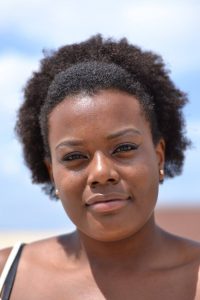After diving into the 1875 tax records of Orange County, I was shocked at the amount of information I was able to gather, the inferences I was able to draw, and then individuals I wanted to research more. The first item I noted was the possession of different animals – subsections that took up a majority of the personal property section. Without even analyzing the individuals to whom the animals belonged, it was apparent that horses, cattle, hogs, and sheep were of the most popular animals owned in 1875. The ownership of mules appeared here and there, but was not as prevalent as the aforementioned animals. Finally, I found that it was rare for an individual in Orange County to own any jacks or jennets. I’d be interested to learn why this was the case.
A second element was not as surprising as the previous thoughts on the animals owned by individuals in Orange County. Utilizing the Number of White Polls or the Number of Colored Polls in combination with the amount of land owned produced a predictable pattern. Black men often did not own land. There were definitely exceptions, such as Haywood Day owning 10 acres, John Guif (sp?) owning 33 acres, and David Justice owning 4 acres. In an attempt to explore these individuals even more, I utilized resources from ancestrylibrary.com, but was not largely successful. I first searched for John Guif, the owner of 33 acres, in an attempt to understand how he came to be the owner of a fairly large number of acres. (To be clear, his “large” number of acres is in relation to the amounts of acres owned by other black men.) However, after finding a John Guif only in the IRS Tax Assessment of Indiana in 1862, I decided to try my luck at another individual.
David Justice was a black homeowner in Durham in 1875, owning 4 acres of land valued at $200. Justice was also the owner of three cattle, valued at $25, as well as $25 worth of “farming items”. He paid $0.37 in state tax, which was on par with the value paid by many other individuals between .14% and .15% of the value of real and personal property. As Justice was a black landowner in Durham, I wanted to do some more investigating into his life. This was not any easier than my previous attempt at an individual search, but there were more (and better) results. Records found for a David Justice in Durham include two marriage registries – one for a David Justice and Julia Laws in 1891 and a second for a David and Laura Justice in 1895. Is the David Justice in both records the same? It is unknown at this point, but a second issue was revealed through the discovery of the marriage licenses. The date of birth of this David Justice was somewhere between 1856 and 1859, too early for him to appear in the 1875 tax records as he had a tally in the column specifying his age between 21 and 50 years of age. Either this individual is not the same, or there was a discrepancy in the record-taking. Thus, it must be emphasized that recordkeeping by hand was a very inexact science. Misspellings, incorrect dates, missing data, and other issues all plagued these sorts of records.
Overall, the exploration of these tax records proved to be very interesting. A discussion of animals owned by these individuals, especially differing in the area in which they lived throughout Orange County, may prove to be intriguing. In addition, these records provide an avenue into the exploration of many personal lives, such as that of David Justice. Finally, while not discussed as much in this blog post, an analysis of the amount of property owned and the taxes paid between whites and blacks, or landowners and non-landowners, may be quite an interesting study to take on in the future.








